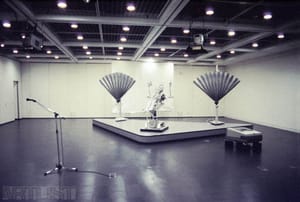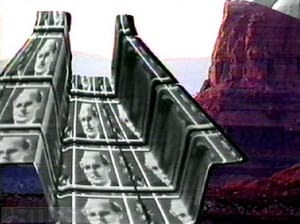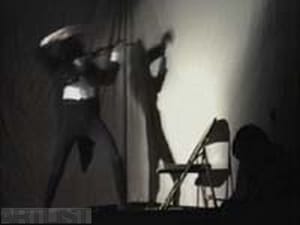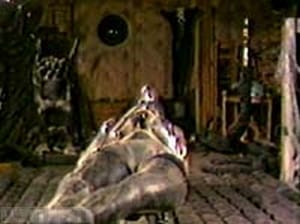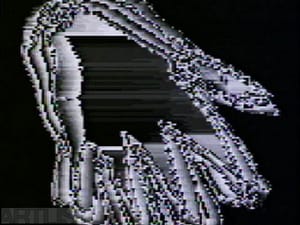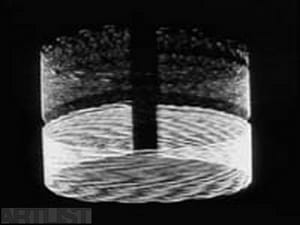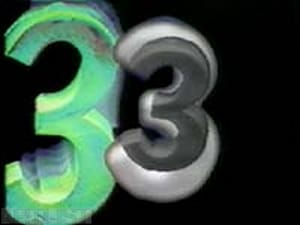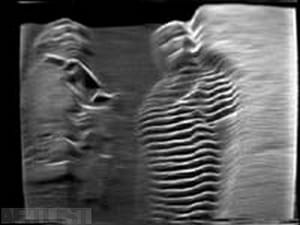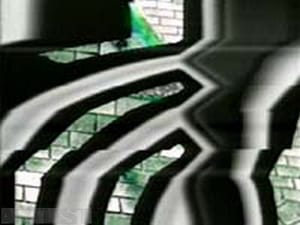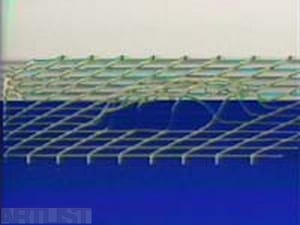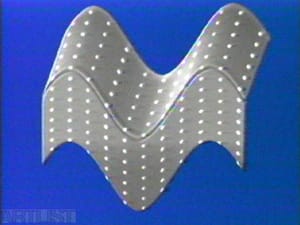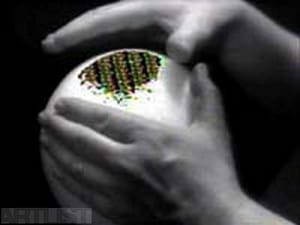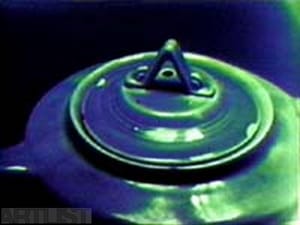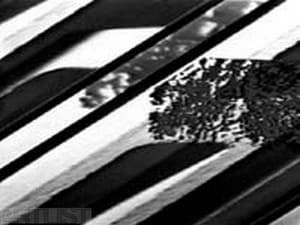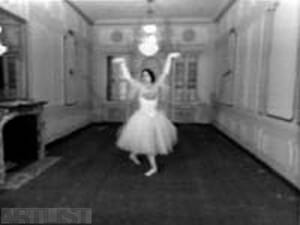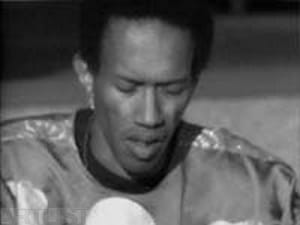- First Name
- Woody
- Surname
- Vasulka
- Born
- 1937
- Birth place
- Brno
- Place of work
- Santa Fe, USA, Karlsruhe, Germany
- Died
- 2019
- CSU Library
- ↳ Find in the catalogue
About artist
a native of Brno (1937) and graduate of the Documentary Department of Prague’s School of Film and Photography (FAMU). He belongs to the first generation of persons to experiment with video technologies. In 1965 he and his wife (and collaborator), the Icelandic Steina, who studied violin and music theory in Prague, emigrated. They moved to the USA and took up residence in New York. At first Woody worked as an editing assistant to Francis Thompson. He co-operated for example on the six-screen film, We Are Young, which was shown at the Montreal World Fair Expo ’67. Between 1966-1969 he worked as a designer and film editor for Harvey Lloyd Productions, where he could – thanks to his approach to the equipment – experiment with electronic sound, stroboscopic projections, and light-activated screens. He later shook off the limitations of the cinematographic apparatus and gracefully moved on to researching electronic material. In 1969 both he and Steina were influenced by the exhibit, TV as a Creative Medium, at the Howard Wise Gallery – the first show devoted to televised art. Steina and Woody began to produce a documentary on the independent art scene in New York’s downtown. They created sketches and video performances and bought their first Portapak and audio synthesizer. In 1971 together with Andy Mannick they founded The Kitchen, an electronic theater located in the Mercer Arts Centre in the former Broadway Central Hotel in the south of Greenwich Village. He focused on developing the figurativeness of video in space. They put together video performances combining visual and sound compositions in real time. They begin to work together with engineers on the development of video production machines: in 1972 they acquired a Dual Colorizer (Eric Siegel) and a Multikeyer (George Brown), which allowed for the layering of as many as six images. The Vasulkas belonged to the first generation of researchers in the field of analogue video. Their creations rank in the area of image processing, perceived as a certain genre in video art, using the features typical of the medium: in this case, experimentation with the parameters of electronic signal.
In 1973 they moved to Buffalo, invited by theorist, Gerald O’Grady, to teach at his Centre for Media Studies, founded by the local branch of the State University of New York. In 1974 they acquire a Rutt/Etra Scan Processor, a machine enabling the modification of video images by deflecting electromagnetic coordinates. George Brown built a Programmer for them, a digital machine for archiving and playing operation sequences. In that year they created, for example, the videos, Noisefields and Reminiscence, and their creative paths began to diverge. In 1975 Woody made his first digital experiments and introduced his „Vasulka Imaging System“, a digital computer-automated user interface that later became the Digital Image Articulator. The Vasulkas first comprehensive exhibit opened in that year in the Albright-Knox Gallery in Buffalo. Woody received a grant from the Guggenheim Foundation allowing a move to Santa Fe in 1980. There Woody began to recycle industrial machines from former military bases (i.e. near Los Alamos). The collection of installations, The Brotherhood, later developed from (these machines). Woody develops the idea of „new epistemological space“ as a place for interaction between the viewers and technology in the installation, Theatre of Hybrid Automatic machines / Divadlo hybridních automatů. In 1983 he created the video, The Commission, a sort of attempt at a new means of electronic narrative. Art of Memory followed in 1987. In 1990 the first installation in a series of six, The Brotherhood, appeared; now it’s Table 2: Automat.
In 1992 the Vasulkas prepared an exhibit devoted to the pioneers of electronic art for the Ars Electronica Festival in Linz (Eigenwelt der Apparatewelt: Pioniere der Elektronischen Kunst). The exhibit also included an experimental catalogue. In that same year they jointly received the Maya Deren Award, a prize given to independent film-makers since 1986. In 1993 Woody obtained a grant from the Open Society Fund. The grant financed lectures on the video medium in Eastern Europe. He also lectured at the Faculty of Creative Arts in Brno. In 1996 a retrospective of the Vasulkas‘ works took place in the San Francisco Museum of Modern Art. Woody first exhibited the complete series, The Brotherhood: A Series of Six Interactive Constructions, in Tokyo’s NTT InterCommunication Center in 1998. In summer 1998 the project, Art and Science Laboratory, at the College of Santa Fe, a co-operative effort between the Vaculkas and composer, David Dunn, and physicist, James Crutchfield, began. In recent years Woody has worked at the Centre for Art and Media Technology (ZKM) in Karlsruhe as part of the OASIS project. There he developed methods for archiving video works and experimental films. At the same time he helped, in a curatorial capacity, in preparing an exhibit focused of the works of artists from circles close to the Center for Media Study in Buffalo (created mainly by Paul Sharits, Tony Conrad, James Blue, Hollis Frampton, Peter Weibel, Steina and Woody Vasulka, and theorist and centre founder, Gerald O’Grady). The exhibit opened in December 2006.
- Author of the annotation
- Lenka Dolanová
- Published
- 2002
CV
1993 grant from Open Society Fund
pedagogical activities at FaVU in Brno
1992 Mayi Deren Prize
1980 grant from Guggenheim Foundation
1973 pedagogical activities at the Centre for Media Studies in Buffalo (State University of New York).
1966-1969 designer and editor of Harvey Lloyd Productions movies
Exhibitions
- Solo exhibitions
-
1998
kompletní cyklus The Brotherhood: A Series of Six Interactive Constructions, NTT InterCommunication Center, Tokyo
1996
retrospektivní přehlídka díla Vasulkových, San Francisco Museum of Modern Art
1992
Vasulkovi připravují výstavu věnovanou pionýrům elektronického umění pro festival Ars Electronica v Linzi (Eigenwelt der Apparatewelt: Pioniere der Elektronischen Kunst)
1990
Table 2: Automata (první ze série šesti instalací The Brotherhood)
1975
První souborná výstava Vasulkových v galerii Albright-Knox v Buffalu
Monography
- Monography
Vasulka, W.: The Brotherhood. A Series of Six Interactive Media Constructions, NTT InterCommunication Center, Tokyo, 1998
Vasulka, W., Vasulka, S. : machine media. — San Francisco : San Francisco Museum of Modern Art, 1996
Vasulka, W., Vasulka, S. : Interaktiivisen Taiteen Näyttely = Exhibition of the interactive art. — Helsinki : Nykytaiteen Museo ; Espoo : Galleria Otso, 1992
Eizykman, Claudie, Vasulka, Steina; Vasulka, Woody – Steina et Woody Vasulka, vidéastes: 1969-1984: 15 années d'images électroniques, analogiques et numériques., Paris: : CINE-MBXA/CINEDOC, 1984
Vasulka, Woody: Descriptions. Buffalo, Albright-Knox Art Gallery, 1978
- Articles
Woody Vasulka a tradice českého umění elektronického obrazu. Speciální číslo časopisu Iluminace (2/2006).
